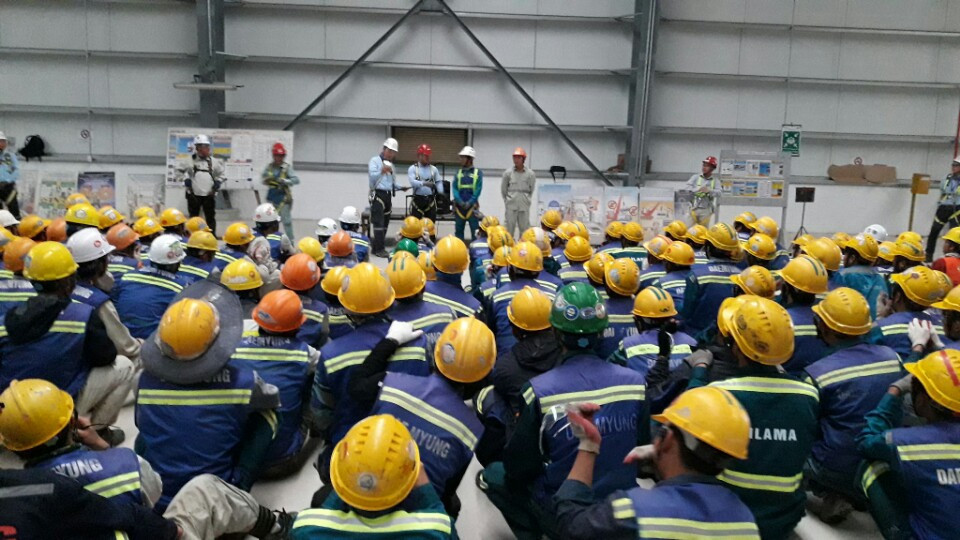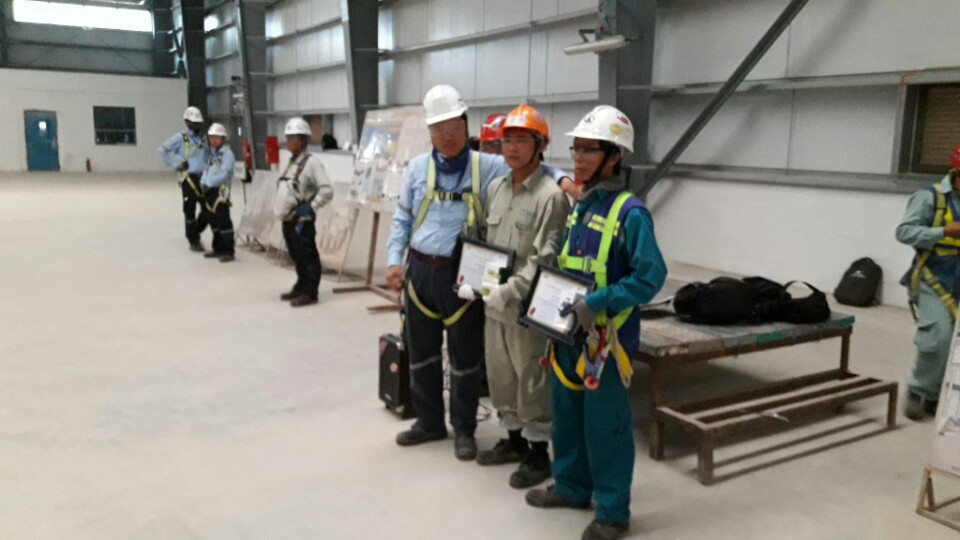Safety award at Nghi Son Refinery and Petrochemical Complex
09/09/2016
August 2016, at Nghi Son Refinery and Petrochemical Complex, representative of Sigma worker was awarded by the main contractor JGC for excellently complying with HSE regulations on site.
See more:
- Nghi Son Refinery and Petrochemical Complex
- The installation situation and hand over on Nghi Son refinery and petrochemical complex site
- Expanding the scope of work in Nghi Son Refinery and Petrochemical Complex
- Stunning photos of Nghi Son Refinery and Petrochemical Complex Site

Main contractor’s representatives awarded for Sigma worker.
Because of the dangerous, toxic factors of industrial petrochemical projects; safety concerns are always a prime consideration for not only investors but also government and local authorities. Foreseeing this key factor, Sigma has complied strictly each safety element in even the smallest points.
This is a short excerpt from the report of Firesafetysearch about safety in the petrochemical industry for us to grasp why safety factors here should have stricter standard than any project.
Protecting Petrochemical Plants
Due to their hazardous nature, petrochemical and gas processing facilities have always been vulnerable to the danger of fire, and the huge potential social, political, financial and ecological impacts of a major disaster mean that safety concerns are always a prime consideration.Because a blaze in a petrochemical or gas processing facility can create a very sudden rise in temperature levels, the potential for the fire to spread is considerable. The effects of this can be devastating, as demonstrated by a major blaze at the UK’s Buncefield Oil Storage Terminal in 2005. The initial stage of the incident triggered a series of subsequent blasts that eventually engulfed 20 large storage tanks. The blasts were audible up to 200 kilometres away and the incident left 244 people requiring medical aid. … One of the most significant dangers faced by oil, petrochemical and gas facilities is the risk of a ‘jet’ or ‘spray’ fire. A jet fire usually involves a forceful flame, created by highly combustible fuel that is released in a particular direction as a result of a leak or other breach in the container that houses the fuel. This situation can create particularly intense levels of localised heat, plus exaggerated degrees of heat flux and turbulence, and it is far more capable of eroding fire protection measures, damaging structural steelwork and rupturing other vessels and pipe work than a non-hydrocarbon blaze. Detail at: http://www.firesafetysearch.com/news/protecting-petrochemical-plants/ |
|---|
Sigma Engineering JSC is proud of professional working style showing skill and spirit of a leading M&E contractor in Vietnam when we have been continuously recognized by customers and partners.

Close-up portrait of Mr. Pham Van Thanh - Awarded Sigma worker
See more:
Other articles
- The Journey of Connection: When Yurtec and Sigma Continue Writing the Chapter of Sustainable Partnership (10/10/2025)
- Sigma accompanies Newtecons at the groundbreaking ceremony of Westlake Square Hanoi – A green architectural landmark in the heart of the capital (04/08/2025)
- Topping-Out Ceremony of The Marc 88 – An Architectural Icon Embodying the Vietnamese Bamboo Spirit in the Heart of the Capital (16/06/2025)
- The Hanoi Department of Home Affairs Inspection Team Works with Sigma Engineering JSC on Compliance with Labor, Wage, and Social Insurance Laws (09/05/2025)
- Sigma attends the grand opening ceremony of the Hyatt Place Halong Bay Hotel project (14/04/2025)
- Updated progress of Horizon Towers (16/08/2016)
- Six Tips to improve Safety Toolbox Meetings (12/08/2016)
- FLC Quy Nhon beach & golf resort Grand Opening Ceremony (06/08/2016)
- The opening ceremony of FPF and Rescue course of Sigma Engineering JSC (02/08/2016)
- Stunning photos of Nghi Son Refinery and Petrochemical Complex Site (29/07/2016)
Partners








































_thumbcr_130x97.png)























 Address :
Address :  Email :
Email :  Tel : (84-24) 3 9288683 | (84-24) 3 9289235
Tel : (84-24) 3 9288683 | (84-24) 3 9289235 Fax : (84-24) 3 9288667
Fax : (84-24) 3 9288667.png)
